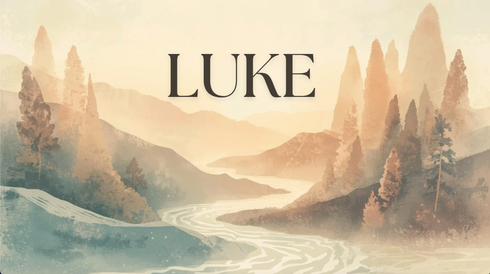
Matthew 27: The Kings Coronation
Matthew 27 presents one of the most pivotal moments in human history: the crucifixion of Jesus Christ. This chapter, aptly titled "The King's Coronation," reveals how Jesus, who had been portrayed throughout Matthew's Gospel as the rightful King, takes His throne—not in the way anyone expected, but through the ultimate sacrifice of His life. The narrative unfolds with incredible depth, showing us both the cruelty of humanity and the sovereignty of God working through what appears to be defeat.
The chapter begins with the religious leaders delivering Jesus to Pilate, the Roman governor. This handoff is significant because it represents the Jewish leadership's rejection of their Messiah and their willingness to involve Roman authority to execute Him. Meanwhile, we see Judas experiencing overwhelming remorse for his betrayal, returning the thirty pieces of silver and declaring, "I have betrayed an innocent man." His suicide that follows demonstrates the devastating consequences of betrayal, while the priests' use of the blood money to purchase a field fulfills prophecy—showing how God's plan unfolds even through the evil intentions of men. The scripture notes specifically that this fulfilled the prophecy of Jeremiah, further establishing Jesus as the promised Messiah whose coming and rejection were foretold centuries earlier.
One of the most striking scenes occurs when Pilate offers the crowd a choice between releasing Jesus or Barabbas, a notorious prisoner. Despite Pilate's recognition of Jesus's innocence and even his wife's warning about her troubling dream, the crowd—influenced by the religious leaders—chooses to release Barabbas and crucify Jesus. This dramatic exchange symbolizes humanity's rejection of righteousness in favor of rebellion, yet paradoxically fulfills God's redemptive plan. Pilate's symbolic washing of his hands and the crowd's willingness to take responsibility for Jesus's blood ("we and our children") carry profound theological significance about human accountability and divine sovereignty working simultaneously.
The crucifixion itself is described with somber detail. The soldiers mock Jesus with a crown of thorns and a purple robe, striking Him and spitting on Him. Their mockery of "Hail, King of the Jews" carries unintended truth—He truly was the King, not just of the Jews but of all creation. The passage notes that Jesus was flogged severely before crucifixion, explaining why He died within hours rather than days as was typical with crucifixion. This detail helps us understand the physical suffering Jesus endured, as Roman flogging often brought victims near death before they even reached the cross. Even at Golgotha, Jesus refuses wine mixed with gall that would have dulled His senses, choosing instead to experience the full weight of suffering for humanity's sake.
Perhaps one of the most frequently misunderstood aspects of the crucifixion is Jesus's cry: "My God, my God, why have you forsaken me?" Many have interpreted this as indicating that God the Father turned His back on Jesus at that moment, temporarily breaking the Trinity. However, as the podcast explains, Jesus was actually quoting the beginning of Psalm 22—a psalm that begins with suffering but culminates in victory. Rather than expressing abandonment, Jesus was declaring that everything was proceeding according to divine plan. This revelation transforms our understanding of this moment from one of divine abandonment to one of prophetic fulfillment and victory. It reassures believers that God does not abandon us in our darkest moments but draws closer to us.
The supernatural events following Jesus's death—the temple curtain tearing from top to bottom, the earthquake, and even the resurrection of many godly people—testify to the cosmic significance of what has just occurred. The centurion's confession, "Truly this was the Son of God," represents the beginning of Gentile recognition of Jesus's true identity. The chapter concludes with Jesus's burial in Joseph of Arimathea's tomb and the authorities' futile attempts to secure it—setting the stage for the resurrection that would definitively prove Jesus's identity and victory. Throughout this entire narrative, we see the sovereignty of the King who, even in death, remained in control, releasing His spirit when His work was complete rather than succumbing to death's timing.
Let’s read it together.
#biblebreakdown
Get this text to you daily by texting "rlcBible" to 94000.
The More we Dig, The More We Find.




